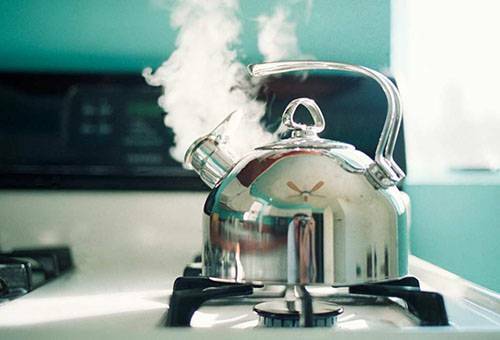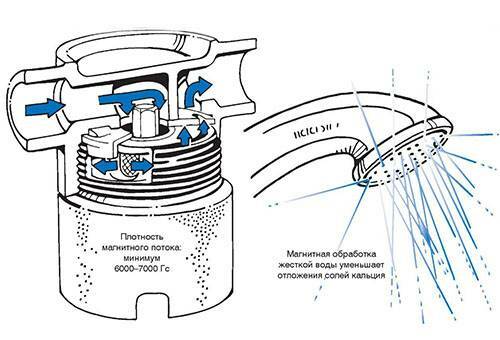Contents:
- Hard water - what is it?
- 7 ways to soften water
- How to soften water in an aquarium?
Rigid water is the constant companion of the life of an urban person. How to soften the water in the aquarium, in the washing machine and dishwasher? What can be done to make water suitable for use in household appliances? Hard water - what is it?
Rigid is water, containing a large number of salts of magnesium and calcium. It is these elements that determine the properties of the liquid flowing from the crane in our home. In addition, chlorides, silicates, phosphates and other compounds can be found in such water. Some of them decompose by boiling, others remain unchanged for a long time. Rigidity of water is largely determined by the location of the settlement and the presence in the soil of various calcareous rocks. Why does every landlady seek to make the water softer at all costs?
Scum on the teapot, sediment on the walls of the washing machine and other household appliances - all these are consequences of using hard water at home. Such water delivers a lot of domestic inconveniences to a person. The effectiveness of various detergents decreases noticeably, because in hard water they simply can not work at full strength. Clothes after washing lose color and softness, shortening the life of it. A thick layer of scale on the heating elements and white stains on the dishes cause the housewives to seek funds to soften the tap water. But is this the cause of everyday life?
Rigid water is a source of serious health problems. She makes her hair dry and brittle, pulls her skin, accelerating her aging. The ingress of such water into internal organs can cause diseases of the kidneys and urinary tract. The liver suffers, taking on a great load on processing of the incoming liquid, as well as large vessels. What can be done to soften tap water?

7 methods of water softening
- Method No. 1.Boiling
It is possible to make water softer at home using conventional boiling. One problem: together with harmful salts of calcium and magnesium, numerous useful compounds also volatilize. In addition, with constant boiling of hard water, the dishes quickly fail.
- Method number 2.Calcined soda
This method of softening hard water was already known in ancient Greece. In those days, mistresses used ash from the hearth and thereby changed the properties of water. Today it is easy enough to add calcined soda to the liquid - and the water will become noticeably softer.2 teaspoons of soda should be carefully placed in 10 liters of water and be sure to wait for the formation of sediment.
- Method number 3.Softening salts
Special softening salts are suitable for changing the properties of the liquid used in dishwashers. Such a product is available in the form of tablets and makes the water softer. The use of softening salts not only positively affects the state of the dishes, but also significantly increases the lifetime of the dishwasher.
Tip
Pay attention to the indicator of the dishwasher - it will prompt, when it is necessary to add softening salt.
- Method # 4.Jar Filters
One of the most popular ways to quickly make water soft at home. Such a filter is a container in the form of a jug, inside which a special filter cartridge is fixed. Having installed a house filter, you can effortlessly achieve water softening. This method is simple and affordable, but the relative cheapness of the device over time plays against it. Filter jug on average works no more than 1.5 months, after which a mandatory replacement of the cartridge is required.

- Method number 5.Magnetic filter
The method is based on softening tap water using two magnets. These devices create a special magnetic field, which should make the liquid softer. Also this original device allows you to remove various harmful impurities. Unfortunately, it is rather difficult to find out how useful this purified water is. In general, the magnetic filter is used in boiler rooms.
- Method number 6.Ion-exchange filter
How to soften hard water at home using an ion-exchange filter? To do this, you need to purchase a device consisting of two tanks. Ion exchange resin is placed in one container, while in the other there is a saline solution. Such a filter passes through itself running water, sending it to a reservoir of resin. The liquid is saturated with ions, after which it enters the solution of the salt. Here, a reaction occurs with the salts of magnesium and calcium, which are gradually removed from the water. The filter replaces the calcium and magnesium ions with sodium, whereby the passing fluid becomes softer.
- Method number 7.Reverse osmosis
The reverse osmosis system is recognized as one of the most effective methods for softening running water. The device is a filter containing a special membrane. Purification and softening of water occurs due to the difference in osmotic pressure. The liquid, passing through the membrane from one solution to another, gradually gets rid of the salts of magnesium and calcium. The only negative: this scheme eliminates not only harmful salts, but also various useful substances, therefore it can not be used for purification of drinking water.

How to soften water in an aquarium?
Of particular note is the softening of water in the aquarium with fish. It is known that many inhabitants of the river bottom prefer to multiply only in soft water. How can I soften the water in the aquarium at home?
- Boiling
The most famous way to make space in an aquarium suitable for fish life. When changing the water should be pre-boiled and cooled, then pour into the aquarium for 2/3.Sediment from the bottom in this case should not rise, because it is where the calcium and magnesium salts fall.
- Distillate
When changing water, you can also use distillate. It should be remembered that this agent not only cleans the liquid of harmful salts, but also reduces the amount of nutrients. Deficiency of microelements can badly affect the condition of the inhabitants of the aquarium, so this method should be used very carefully.
- Freezing
This simple method is available to any aquarist. The water used should simply be poured into a container and left in the freezer for a while. When half the water freezes, it should be poured, and the ice pulled out of the refrigerator. The ice will melt and it can be used to fill the aquarium.
- Reverse osmosis
Many fans of aquarium fish prefer to use a reverse osmosis filter at home. The device is installed in the room and connected directly to the water supply. This method is undoubtedly the most convenient, but also quite expensive at the same time. The use of such filters is justified in large aquariums.



